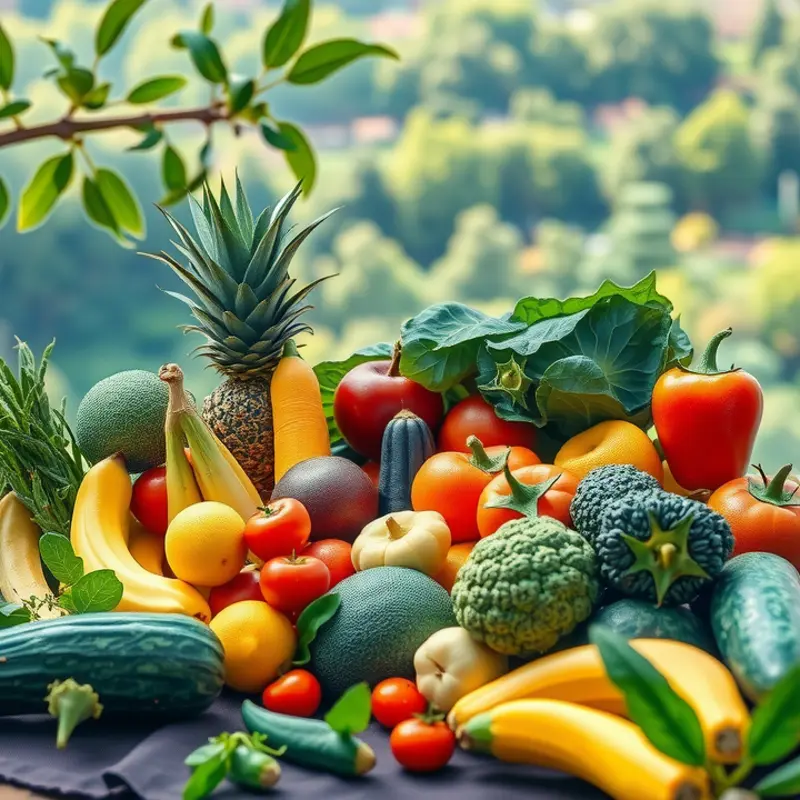Fruit smoothies are often hailed as a quick and healthy snack option, but they can also raise concerns among nutrition-conscious individuals. With the rise of pre-packaged smoothies and trendy recipes, misconceptions abound regarding their nutritional value and potential downsides. Are they genuinely healthy, or do they contribute to unhealthy eating habits? This guide aims to clarify common misconceptions and provide you with the insights necessary to make informed dietary choices.
Understanding the Ingredients: What’s in Your Smoothie?

When exploring the world of fruit smoothies, understanding their ingredients is crucial for assessing their health impact. Smoothies often boast a mix of fruits, vegetables, healthy fats, and sometimes added sugars. These components significantly influence the nutritional profile of your drink.
Fruits are the star players in most smoothies. They add natural sweetness and provide essential vitamins and minerals. Berries, bananas, and mangoes, for instance, offer high doses of vitamin C, potassium, and antioxidants. Yet, consuming large quantities can spike your sugar intake. Moderation is key to balance enjoyment with health.
Incorporating vegetables into your smoothies boosts your fiber and nutrient intake without adding excessive calories. Leafy greens like spinach or kale blend well and are rich in iron, calcium, and vitamins A and K. These ingredients can help maintain energy levels and support overall health.
Healthy fats are another crucial element. Ingredients like avocados, nuts, and seeds provide healthy mono- and polyunsaturated fats. These fats are essential for brain function and support satiety, which can prevent overeating later. Furthermore, fats can enhance the absorption of fat-soluble vitamins from other smoothie components.
However, added sugars are where smoothies often veer into unhealthy territory. Many store-bought or pre-packaged options contain sweeteners to enhance flavor, significantly increasing their sugar content. Consistent overconsumption may lead to weight gain and an increased risk of diseases. To avoid this, opt for naturally sweet fruits and limit additional sweeteners.
Balancing these ingredients is critical to creating a nutritious smoothie. Aim for a mix of fruits and vegetables, include a source of healthy fat, and avoid over-reliance on sweet fruits or added sugars. This careful curation turns a snack into a well-rounded meal. For more tips on balancing ingredients naturally, explore our guide on flavor boosters without salt.
Ultimately, the key is balance and mindful selection of each ingredient’s nutritional value. By tailoring your smoothies with health-conscious choices, you can enjoy a deliciously refreshing drink that serves both flavor and nourishment.
Balancing Your Smoothie: When Healthy Becomes Unhealthy

Fruit smoothies often project an aura of health, yet the boundary between beneficial and detrimental can be surprisingly thin. A seemingly healthy beverage can quickly transform into a high-calorie, sugar-laden indulgence. The key to maintaining this balance lies in portion sizes, ingredient ratios, and an awareness of potential pitfalls.
Understanding portion sizes is essential. A large smoothie can often outstrip a full meal in terms of calories, especially if consumed as a drink alongside other meals. Consider the size of the smoothie compared to how it fits within your daily caloric intake. An ideal serving size typically ranges from 8 to 12 ounces, providing enough nutrients without overloading on calories.
Ingredient ratios play a crucial role in the nutritional value of smoothies. Fruits, while nutritious, often contain high levels of natural sugars. If a smoothie consists primarily of fruit, it can lead to excessive sugar intake. To mitigate this, consider balancing the amount of fruit with other ingredients like leafy greens, low-calorie vegetables, and a source of protein or healthy fats. This not only reduces sugar concentration but also creates a more balanced nutrient profile.
Moreover, using whole fruits rather than fruit juices can significantly impact the nutritional quality. Whole fruits contain fiber, which is often lost in juices, leading to a spike in blood sugar levels. Fiber helps in moderating sugar absorption and enhances satiety, keeping hunger at bay for longer periods.
Potential pitfalls also include the addition of sweeteners and other calorie-dense ingredients. Pre-packaged smoothies or those from commercial outlets might include added sugars, honey, or syrups to enhance flavor. When creating homemade smoothies, be cautious of ingredients like sweetened yogurt, ice creams, or flavored protein powders, which can inadvertently increase the sugar and calorie content.
To explore healthier alternatives, consider nutrient-dense substitutions. For example, swap out high-calorie additives with healthier options such as unsweetened almond milk, Greek yogurt, or a small amount of nut butter. These ingredients can contribute to a creamy texture without the added sugars. For additional tips on avoiding sugar-laden ingredients, you might find flavor boosters without salt to be a useful resource.
Incorporating mindful eating practices can further enhance the smoothie experience. Paying attention to the ingredients and savoring the flavors can reduce the tendency to consume mindlessly. For those interested in mastering these techniques, guidance on addressing unconscious eating can be enlightening.
In summary, crafting a healthful fruit smoothie requires a nuanced approach. Balance the fruity sweetness with greens, monitor portion sizes, and choose whole ingredients over processed ones. By navigating these choices wisely, smoothies can remain a vibrant part of a nutritious diet.
Final words
Ultimately, fruit smoothies can be a healthy addition to your diet—or they can become a source of unnecessary sugars and calories if not prepared mindfully. By understanding the ingredients and focusing on balance, you can harness the nutritional benefits of smoothies without falling prey to their potential downsides. Keep an eye on portion sizes and try to incorporate a variety of ingredients for maximum health benefits. With the right knowledge, fruit smoothies can indeed be a delicious and nourishing choice.








